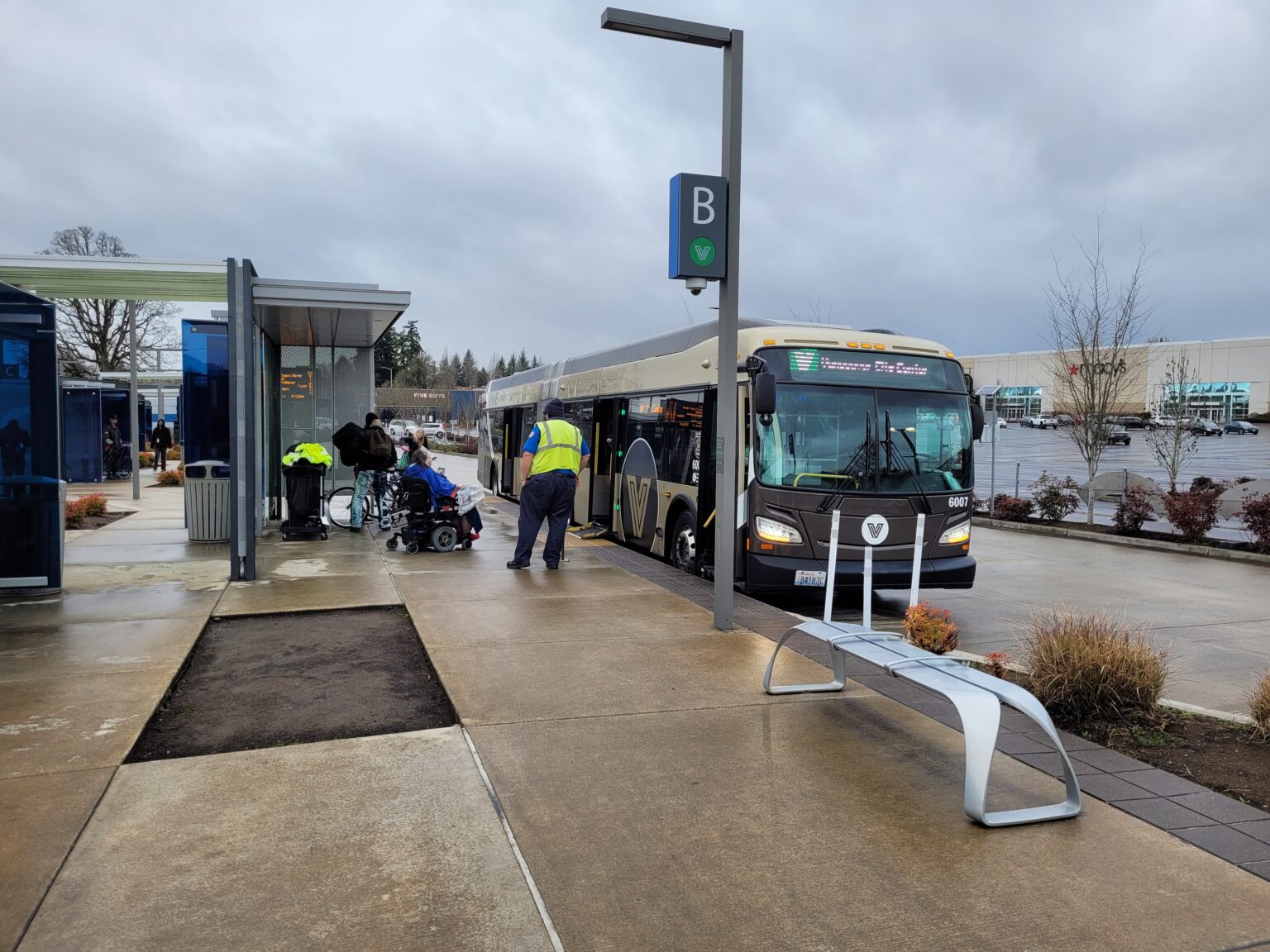Whatcom Transportation Authority is considering a small-town version of rapid transit, hoping to make the bus a more appealing option for Bellingham commuters.
Certain popular routes could run as frequently as every five minutes, with digital signs at each stop telling riders when the next bus will show up. Some stretches of road, including Woburn Street near Barkley Village and High Street on the Western Washington University campus, could be reconfigured to allow for quicker trips on the new rapid-transit bus lines.
At the high end, WTA officials said full conversion of WTA’s blue, green and gold “GO” lines could cost $69 million and take a decade to complete. Each “GO” line currently runs every 15 minutes on weekdays.
The blue line connects WWU and downtown Bellingham. The green line connects the Cordata and downtown bus stations via Northwest Avenue. The gold line, also under consideration for conversion to rapid transit, connects Cordata and the downtown by a more circuitous route: via Barkley Village, Woburn, Alabama Street and Cornwall Avenue.
A full-blown rapid-transit system might involve removing center-turn lanes from streets to create dedicated bus lanes. Bus stops might be elevated so riders can walk or roll directly onto buses without climbing steps. Stops could even include bicycle lockers and other amenities.
The transit agency’s board of directors is likely to approach the buildout of rapid transit in phases, taking small bites out of this big project. Quick fixes could include the “hot spots” at Woburn and High Street, installing traffic lights that turn green on bus lanes first, increasing the frequency of buses and installing signs with real-time bus information.
“There are not too many communities of this size that have done bus rapid transit, so we need to really dive deeply into what that means for Bellingham and Whatcom County,” WTA Planning Director Tim Wilder told the board earlier this month.
WTA officials in February toured rapid-transit systems in cities both small and large, including Everett, Seattle, Olympia, Portland and Eugene. One thing they didn’t take away from their field trip was a strong sense of whether these cities’ rapid-transit lines resulted in increased ridership. Some cities established rapid-transit lines on already-busy routes, Wilder said. In other cases, the enhanced service was too new to gather any data about changes in ridership.
“If ridership doesn’t go up, we’re not really helping ourselves other than maybe feeling good,” Lynden mayor and WTA board member Scott Korthuis said on April 6.
WTA has yet to rebound fully from the COVID-19 pandemic. The agency saw a 70% increase in bus boardings from 2021 to 2022, but last year’s ridership was still down 35% compared to 2019.
Ridership continues to trend upward this year while remaining below pre-pandemic levels. In the first three months of 2023, boardings were 22% below the same period in 2019.
Before WTA leaders make any decisions on rapid transit, they will gather public input on a new “Engage WTA” website, modeled after the City of Bellingham’s public engagement site. Officials say they hope to have the new site running by May 15.




